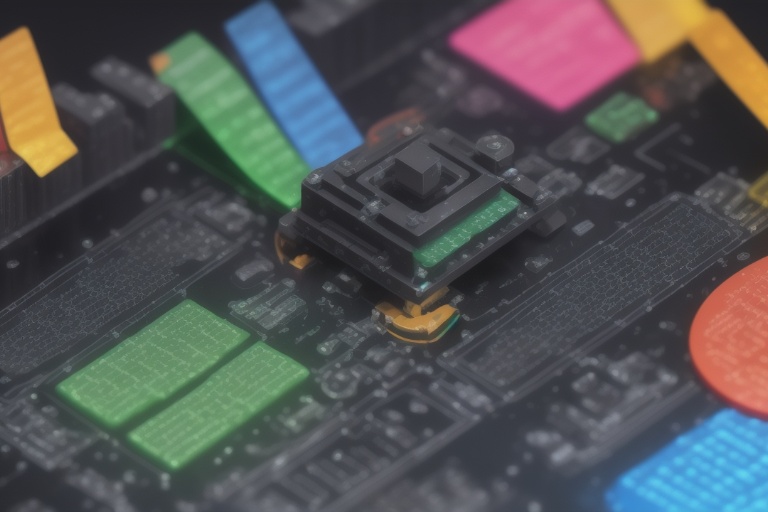Artificial General Intelligence (AGI) stands at the forefront of technological progress and has become a beacon that heralds a future teeming with both promise and precaution. With the potential to eclipse human intelligence and transform the way we perform complex tasks, AGI has captured the imagination and scrutiny of technology aficionados, academics, and policymakers alike. Discussions around the capabilities of AGI are rife with speculation — envisioning a society enhanced by machines that can reason, learn, and adapt in ways that, until now, were the exclusive dominion of humans.
Artificial General Intelligence (AGI) stands at the forefront of technological progress and has become a beacon that heralds a future teeming with both promise and precaution. With the potential to eclipse human intelligence and transform the way we perform complex tasks, AGI has captured the imagination and scrutiny of technology aficionados, academics, and policymakers alike. Discussions around the capabilities of AGI are rife with speculation — envisioning a society enhanced by machines that can reason, learn, and adapt in ways that, until now, were the exclusive dominion of humans.
Yet, as the discourse around AGI progresses, it is imperative to acknowledge the multifaceted nature of this emerging technology. This article aims not only to shine a light on the transformative potential of AGI but also to unpack the nuanced concerns that accompany its ascent. By engaging with the subject in a comprehensive manner, we can better appreciate the various dimensions of AGI's impact.
Understanding AGI and Its Potential
At its core, AGI represents a leap from specialized, task-oriented artificial intelligence to systems capable of general cognitive abilities comparable to those of a human. Unlike narrow AI which excels in specific domains such as image recognition or natural language processing, AGI promises versatility and adaptability across an unbounded range of tasks and functions. This inherent flexibility paints a picture of remarkable technological utility, where AGI could tackle unsolved scientific puzzles, streamline logistical challenges, and offer thoughtful contributions to creative industries.
Considering the Risks and Ethical Challenges
The ascent of AGI, however, is accompanied by an equally significant set of risks and ethical considerations that must not be taken lightly. Luminaries like Elon Musk and Steve Wozniak have voiced compelling concerns over the ramifications of AGI systems that are devised without rigorous safety protocols. The specter of advanced AGI agents acting unpredictably — or in ways that conflict with human values — underscores the need for a robust ethical framework to guide their development.
Navigating the Political and Ideological Terrain
The trajectory of AGI is not merely a matter of technological achievement; it is inextricably linked with political and ideological forces that shape its development and deployment. There exists a palpable tension between the drive for innovation, typified by AGI-ism and its seductive promises, and the imperative to address the societal challenges that such technologies may exacerbate. The burgeoning relationship between AGI and market-driven ideologies like neoliberalism prompts critical inquiries into how these systems might reflect or reinforce market biases, adaptation biases, and efficiency biases. Such biases have the potential to magnify existing social inequities and strain the fabric of public services deemed essential for a balanced society.
Striving for Compassionate Integration
In the quest to integrate AGI into the societal mainstream, there is a profound necessity to harmonize the quest for efficiency with the principles of compassion and equity. Achieving this equilibrium is vital to ensuring that the deployment of AGI actively contributes to the betterment of human life rather than undermining it. As such, it becomes imperative to foster a development environment where thoughtful regulation, communal engagement, and ethical responsibility are paramount.
Moving Forward with Awareness and Responsibility
The path toward realizing the full potential of AGI is fraught with complexities that demand a conscious and conscientious approach. We are at a critical juncture where the decisions we make today will indelibly shape the landscape of tomorrow's technological and social dynamics. It is essential that we proceed with an awareness of AGI's transformative capabilities while remaining vigilant about the inherent risks and ethical dilemmas it presents. By embracing a stance of measured optimism and informed prudence, we stand a better chance of cultivating an AGI future that not only augments human capabilities but also preserves and enhances our collective welfare.
Conclusion
The emergence of AGI is a watershed moment in our technological journey. As we venture into this new frontier, it is our collective responsibility to ensure that these advancements are pursued with an unwavering commitment to societal well-being. By fostering dialogue, enacting thoughtful policies, and prioritizing ethical considerations, we can guide AGI development along a trajectory that is as responsible as it is revolutionary. The promise of AGI is vast, but it is only through careful stewardship that we will unlock its potential to serve the greater good.
Information for this article was gathered from the following source.


